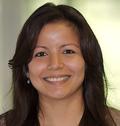Cited By
View all- SEKARA VKARSAI MMORO EKIM DDELAMONICA ECEBRIAN MLUENGO-OROZ MJIMÉNEZ RGARCIA-HERRANZ M(2024)THE OPPORTUNITIES, LIMITATIONS, AND CHALLENGES IN USING MACHINE LEARNING TECHNOLOGIES FOR HUMANITARIAN WORK AND DEVELOPMENTAdvances in Complex Systems10.1142/S021952592440002227:03Online publication date: 3-May-2024


